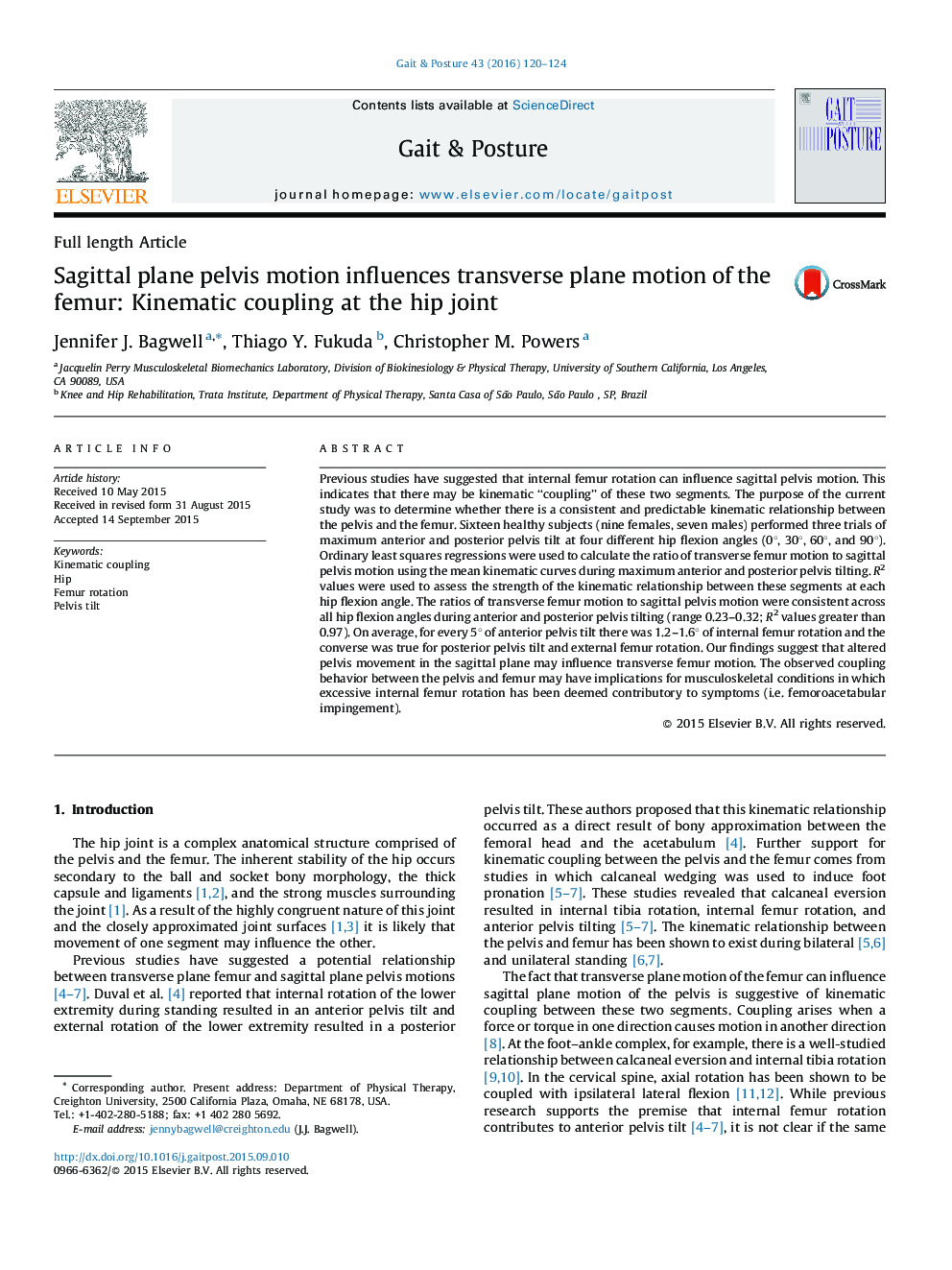| کد مقاله | کد نشریه | سال انتشار | مقاله انگلیسی | نسخه تمام متن |
|---|---|---|---|---|
| 4055837 | 1603852 | 2016 | 5 صفحه PDF | دانلود رایگان |
• We assessed the effect of sagittal pelvis tilt on femur rotation.
• There was a relationship between anterior pelvis tilt and internal femur rotation.
• There was a relationship between posterior pelvis tilt and external femur rotation.
• Altered sagittal plane pelvis movement may influence transverse plane femur movement.
Previous studies have suggested that internal femur rotation can influence sagittal pelvis motion. This indicates that there may be kinematic “coupling” of these two segments. The purpose of the current study was to determine whether there is a consistent and predictable kinematic relationship between the pelvis and the femur. Sixteen healthy subjects (nine females, seven males) performed three trials of maximum anterior and posterior pelvis tilt at four different hip flexion angles (0°, 30°, 60°, and 90°). Ordinary least squares regressions were used to calculate the ratio of transverse femur motion to sagittal pelvis motion using the mean kinematic curves during maximum anterior and posterior pelvis tilting. R2 values were used to assess the strength of the kinematic relationship between these segments at each hip flexion angle. The ratios of transverse femur motion to sagittal pelvis motion were consistent across all hip flexion angles during anterior and posterior pelvis tilting (range 0.23–0.32; R2 values greater than 0.97). On average, for every 5° of anterior pelvis tilt there was 1.2–1.6° of internal femur rotation and the converse was true for posterior pelvis tilt and external femur rotation. Our findings suggest that altered pelvis movement in the sagittal plane may influence transverse femur motion. The observed coupling behavior between the pelvis and femur may have implications for musculoskeletal conditions in which excessive internal femur rotation has been deemed contributory to symptoms (i.e. femoroacetabular impingement).
Journal: Gait & Posture - Volume 43, January 2016, Pages 120–124
